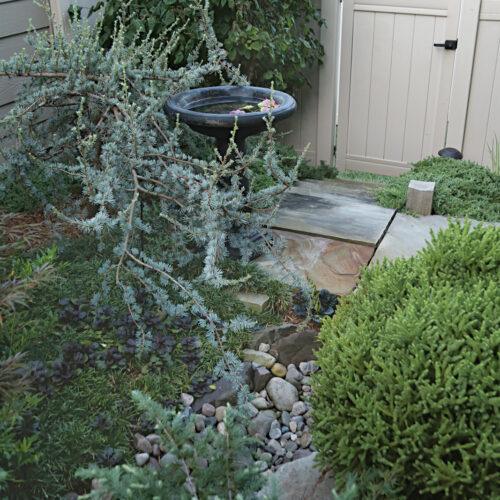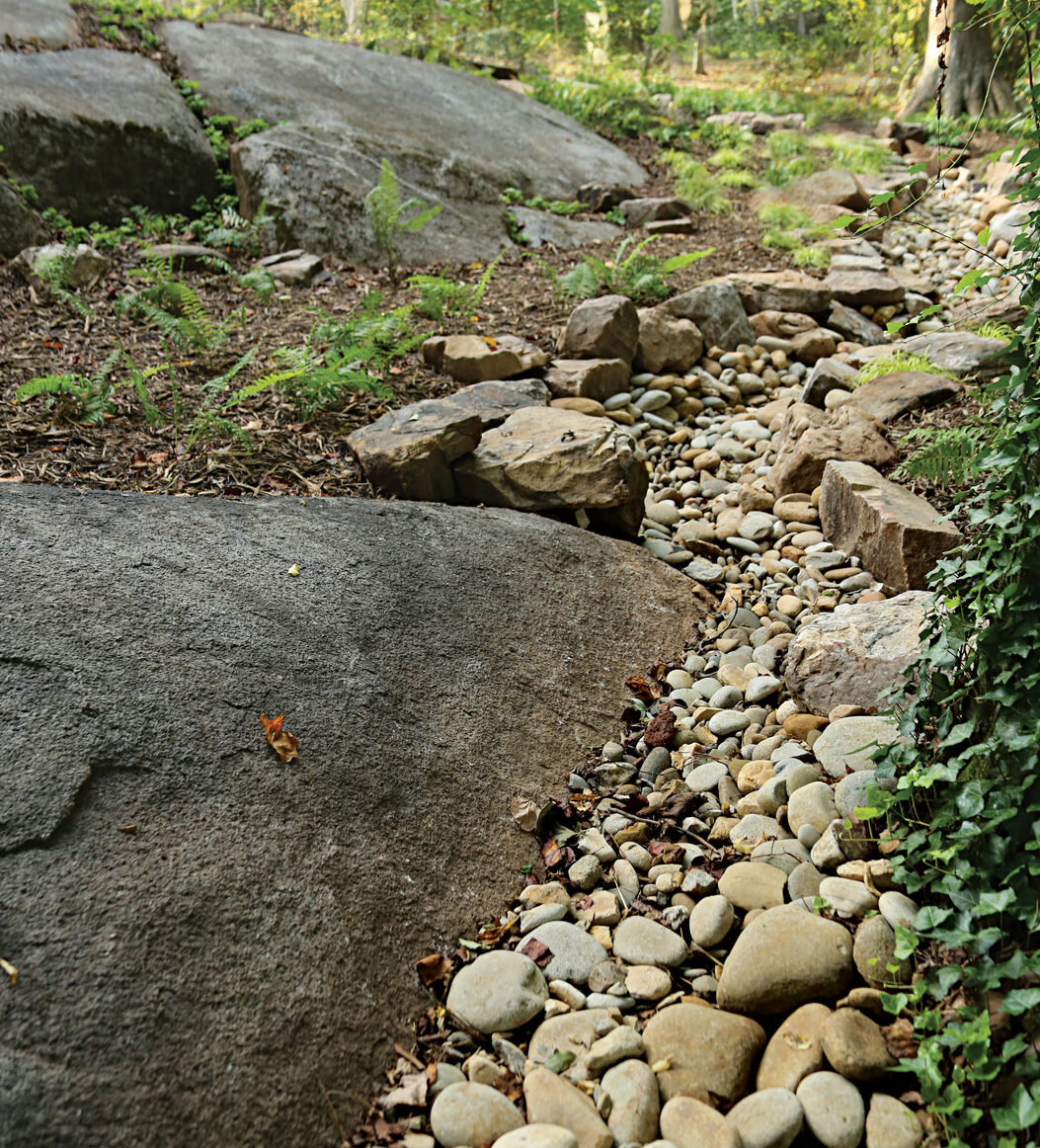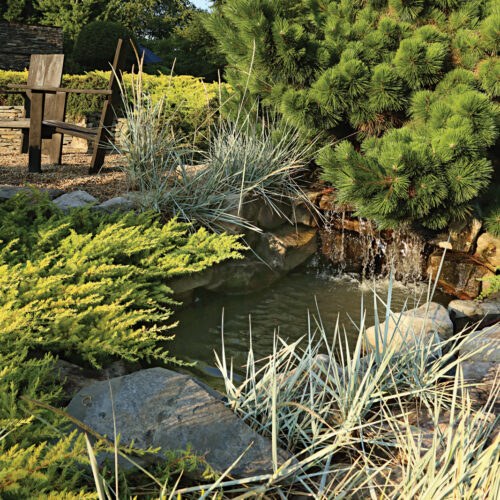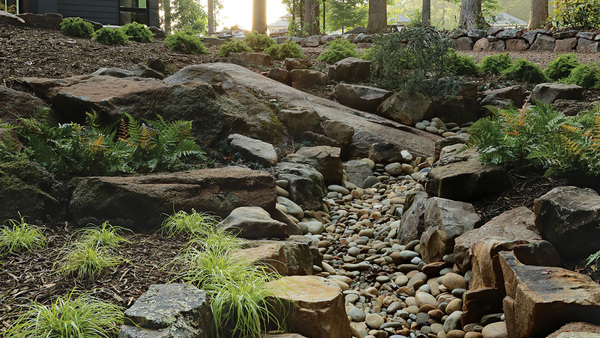
The following five garden spaces are a good representation of the variety of styles that dry creek-bed designs can encompass. Each of these designs also solved a unique issue stemming from a challenging site prone to runoff.
Jay Sifford describes more in his article How to Design a Stylish Dry Creek Bed:
“A dry streambed can be a beautiful focal point around which to build a garden—while still effectively moving stormwater to more desirable places. I’ve been designing dry streambeds for over 15 years and can promise you there is a style that fits nearly every garden. Hopefully, after seeing the beautiful spaces pictured here, you’ll want one of these features for your very own—regardless of whether you have a runoff problem or not.”
Design 1: Asian-inspired dry creek bed
▸ Problem: Urban infill within a planned community of townhomes sited extremely close together
▸ Solution: A Japanese-inspired skinny streambed directs runoff from the neighbor’s roofline down a narrow channel and out into a communal turf area beyond the fence line. Additional water that sometimes pools off the concrete patio flows into the dry streambed and is then absorbed by the dense plantings along its banks.

 |
 |
| ▸ Detail not to be missed Rectangular stone plinths laid vertically and horizontally offer a visual contrast to the rounded, organic-shaped stones. |
|
Design 2: Dry creek bed for an urban family-friendly lot
▸ Problem: A narrow, awkward space between the house and a detached garage, with a significant grade change and damaged soil substrate
▸ Solution: This dry streambed starts at the top of the slope and takes up all the space between the garage and the side of the home, directing and diverting water flowing from the neighboring property downward in a well-managed fashion. The bed widens at the end, forming a basin where the runoff can pool and be slowly absorbed into the surrounding garden bed.

 |
 |
| ▸ Detail not to be missed A wooden bridge over the stream allows the family to pass from the garage to the home without getting wet feet. |
|
Design 3: Streambed for a steep woodland slope
▸ Problem: A sharp hill created from new construction that resulted in an area of extreme erosion
▸ Solution: This long, meandering streambed has several curves and turns throughout that divert water gently down the embankment. Because of the size and scale of this streambed, larger than normal stones were possible, a series of which was placed within the trench to help slow down and divert the huge volume of water this site sees.

 |
▸ Detail not to be missed Natural, existing rock outcroppings (some of them smooth and called “slide stones”) were incorporated into the design to create the feeling that this dry streambed has always been present on the property. |
|
Design 4: Contemporary lakeside landscape streambed
▸ Problem: Unstoppable runoff from the roofline pooled right against the foundation, increasing the risk of basement flooding
▸ Solution: A deep yet fairly straight streambed built just off the foundation pulls water away from the house and to the edge of the property. Dense garden beds along the banks help by absorbing much of the runoff.

 |
 |
| ▸ Detail not to be missed
Some ferns have reseeded themselves into the river rock and now help make this streambed feel like it’s an organic feature of the site. |
|
Design 5: Large suburban front-yard dry creek bed
▸ Problem: Lack of a focal point in an expansive street-facing area
▸ Solution: This streambed is purely aesthetic and was created to give the large front yard an eye-catching focal point. It needed a bold design to stand out from the surrounding landscape. Embedded flagstone laid on end and secured with polymeric sand creates the illusion of flowing water.

 |
▸ Detail not to be missed A man-made water feature at the end of the faux river provides an added visual treat for visitors and passersby along the street. |
Jay Sifford is an award-winning garden designer in Charlotte, North Carolina.


















Comments
Log in or create an account to post a comment.
Sign up Log in